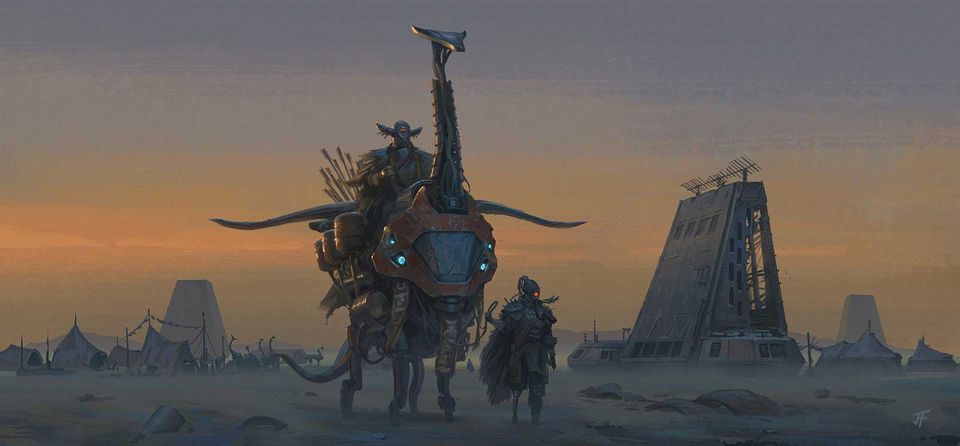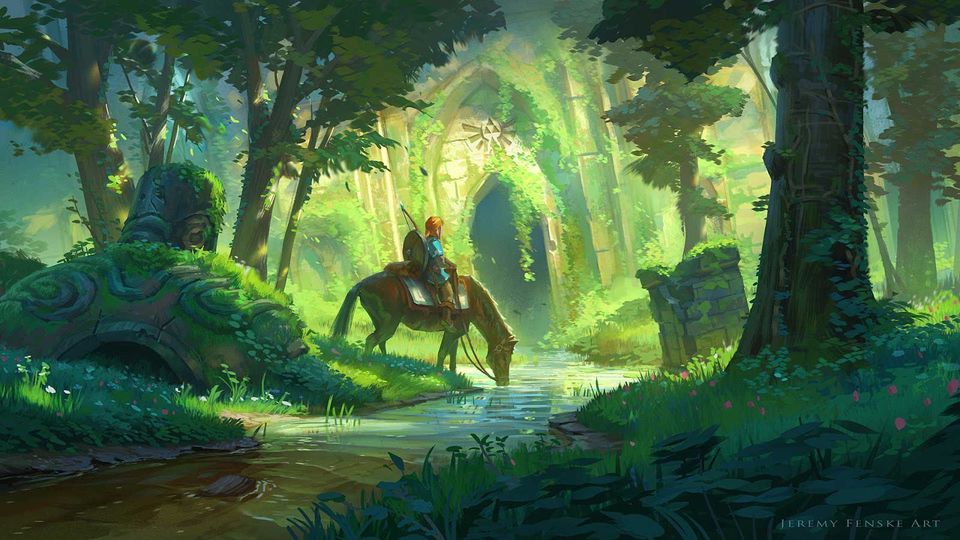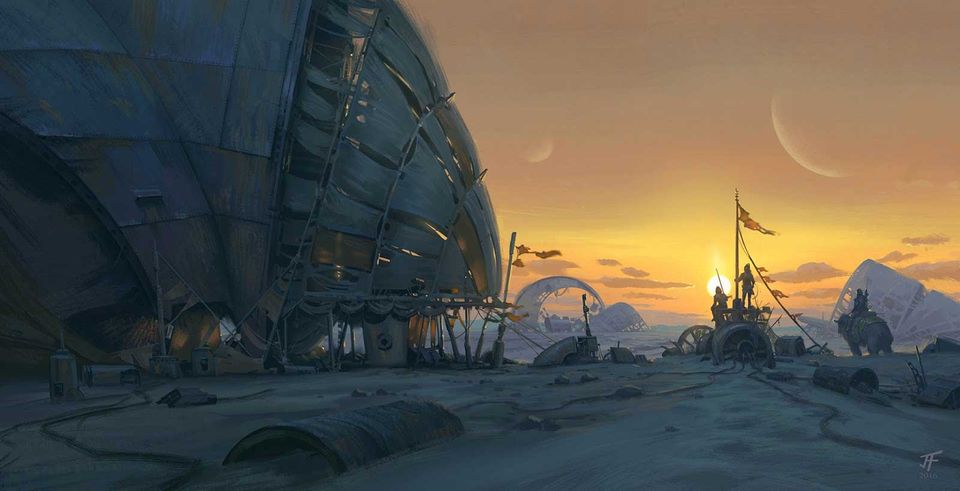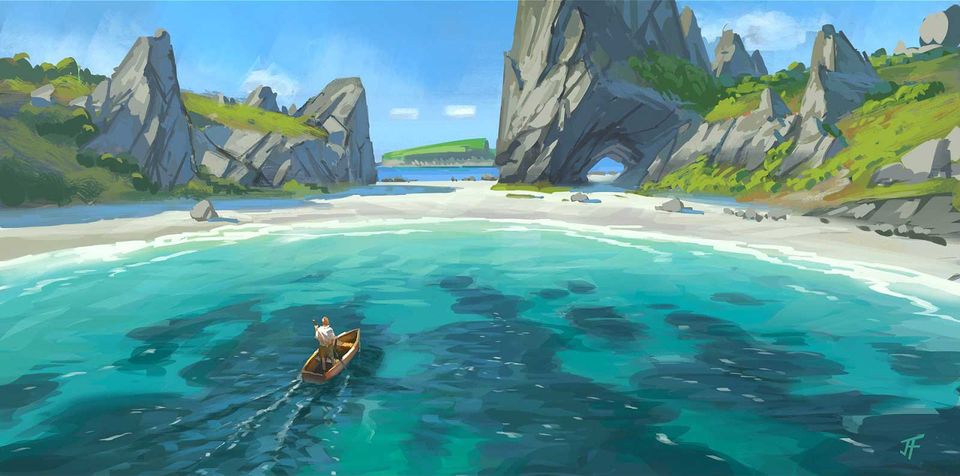Artist Spotlight: Jeremy Fenske
February 27, 2020
Everyone’s work is deeply idiosyncratic: in our regular Spotlight segment we explore artists’ experiences and inspiration to understand what defines and inspires their unique styles.
Can you give us a brief background on yourself?
I'm originally from Cleveland Ohio and for as long as I can remember I've always been drawing, painting, and creating art. In 2009, I graduated from Columbus College of Art and Design as a Fine Arts major. It was during my senior year in college when I started to create my concept art portfolio and landed my first job with Zenimax/Bethesda a month after graduation. There I worked on the 'Elder Scrolls Online' for 6 years throughout its production. In 2015, I left Zenimax to go work with High Moon Studios in San Diego on 'Destiny' and that is where I am today.

What kind of influence does your location have on your career?
As a professional working in the gaming industry a lot of industry gatherings and studios are located in Southern California. Being closer to these events and studios brings me closer to my industry, and keeps me involved in it, while also opening up new opportunities that distance has kept me from. But, with the way the internet has changed things it is less important to live in the bigger cities to gain clients and work. Now you don't have to leave home to make people aware of who you are.
What is your greatest source of inspiration?
For me the real world is far more inspirational than anything else. There is nothing more beautiful, more strange, and more well designed than what occurs in nature. Every great visual design, original creature, and invented world ever created was in some way inspired by our own world.
Could you pick one piece of art that has made a lasting influence on you, and if so why?
There is a piece by Peder Mønsted called "Sleigh ride on a sunny winter day" that has been a great source of inspiration. Nothing sentimental, but rather an embodiment of what it means to be a great landscape painter. The understanding of how light reflects off the snow and trees shows a perfect balance of how physical light behaves and can convey an emotional image.
What skills or techniques do you find most useful in your line of work? Do you use primarily traditional or digital methods to create your artwork?
For me the most important skills to understand are the basic fundamentals such as; light, color, design, composition, anatomy, etc. As a concept artist it is important to be able to make an image that shows what the final product should look like and help sell interesting new ideas in a fully realized manner. I need to be able to make something imaginary look and feel real to people who don't understand the process or to inspire a development team to make something amazing. I mainly use digital media for creating work especially for my day job. At home I use both digital and traditional, I enjoy working with oil, gouache, and watercolor for painting plain air outside. Digital media cannot replace the feeling of a brush on canvas and its a feeling I need to have from time to time.
How can people who are interested in discovering more of your work find it?
I'm on all the social medias!
Blog: jairworks.blogspot.com
instagram, twitter and tumblr
email: jeremyfenskeart@gmail.com
Scriba is a revolutionary digital stylus that is ergonomically designed to comfortably fit your hand and uses unique Squeeze-Motion technology.
Order here.
Articles

In the period since COVID forced many of us back home and out of the office, remote work has become the new norm for many. The flexibility of working from home, especially for those with small children, is very compelling, but making a productive workspace is more than setting up a desk in the spare room. More people are seeking to create functional and comfortable workspaces in their homes, however, it can be difficult to strike the right balance between a professional office space and a cosy home environment. Here are some tips for designing a home workspace that meets both of these needs: Dedicate a specific area for work Designating a specific area for work is essential for separating work from leisure time. This could be a separate room or just a corner of a room. It is important to make sure that the workspace is free from distractions and clutter, as this will help you stay focused and productive. Choose the right furniture Ergonomic furniture is key to a comfortable and productive workspace. Invest in a comfortable chair, a desk that is the right height, and a good-quality mouse and keyboard. If you are prone to back pain, consider a standing desk. Add personal touches Just because your workspace should be functional, doesn’t mean it can’t be personal. Add photos, plants, and other personal items to make the space feel like your own. This will help create a sense of comfort and make you feel at home in your workspace. Good lighting Good lighting is essential for a comfortable workspace. If possible, place your desk near a window for natural light. If not, invest in a high-quality desk lamp to provide bright, even light. Keep it organised An organised workspace will help you stay productive and focused. Use desk organisers, filing cabinets, and other tools to keep your work area free from clutter. A clean and organised workspace will also help you start each day with a clear mind. Consider your work style Think about the type of work you do and how you like to work. If you prefer a minimalist workspace, opt for a simple desk and a few basic supplies. If you need space for multiple screens and other technology, make sure you have enough room to work comfortably. Take breaks It’s important to take breaks throughout the day to avoid burnout. Step away from your desk, go for a walk, or do some stretching exercises to clear your mind and recharge.












